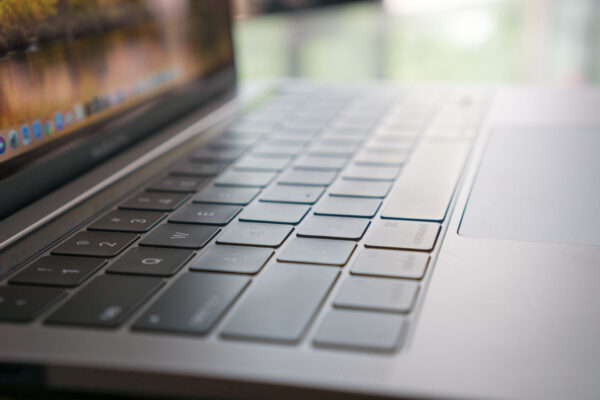Apple introduced a new butterfly keyboard mechanism in the 2015 12-inch MacBook computers. Since then, they’ve an improved version used from the late-2016 MacBook Pro computers. These new keyboards allowed Apple to produce even thiner notebooks, but users had a mixed bag of reactions, even with the newer butterfly mechanism.
The keyboard is a very important interface element on our computers. Sure, modern graphical environments are designed to be used with a trackpad, mouse, or some sort of pointing device, including touchscreens which Macs still lack, but power users depend a lot on the keyboard. I use my keyboard a lot, so much that my choice of preferred apps can be influenced by the availability of keyboard controls.
I tried the 2015 12-inch MacBook and I’ve had to agree the keyboard wasn’t great. It felt very different, and although that doesn’t necessarily mean bad, I did feel that 1st generation butterfly mechanism just wasn’t good enough. I don’t know if I would ever get used to it. I never got the 12-inch MacBook, because it just didn’t seem powerful enough for my needs.
The late-2016 MacBook Pro computers came along with newer, improved, butterfly mechanisms. Coming from a “normal” keyboard, the new MacBook Pro’s keyboard felt different. It felt far too shallow, almost uncomfortably shallow. The keys were definitely quick and accurate, but it just felt so strange that there was only so little that you could push down on. Compared with the 1st generation butterfly mechanism, this new one felt like something I could get used to.
Initially, I hadn’t hoped for too much. Being able to get used to the new keyboard is good. But that doesn’t mean it’s better, or something that I would prefer to have. Having used keyboards as much as I have, I always thought that key-travel was important. There is just so little of it in the new MacBook Pro keyboards. It might not be a bad keyboard, but at most it’ll be just half-as-good?
I grew accustomed to the new keyboard within a couple of weeks. I liked using it. I got so comfortable using the new keyboard that, when I had to go back to the older MacBook Pro’s keyboard, I found the latter too soft and mushy. Tolerable, still, but less preferable to the new MacBook Pro keyboards from late 2016.
Funny enough, It’s now the short key-travel that makes the new keyboard feel just right. It’s about been minimalist. There’s enough movement, enough tactile feedback, for me to feel, with absolute certainty, that the key press has been registered. Any extra key-travel would be superfluous and unnecessary.
Then, the letter “U” on my MacBook Pro broke. It didn’t break entirely. It simply wasn’t always registering a key press unless I exerted enough force during the press. I tried a few keyboard cleaning tips, including the official Apple guide that puts the MacBook Pro through some silly 75° tilting antics. I gave up and sent the MacBook Pro in for servicing, the subject of which would be saved for a post another day. During this time, I went back to the old keyboard and realised I absolutely preferred the new second generation butterfly keyboard mechanism.
There were a couple of controversial changes introduced in the late 2016 MacBook Pro computers. The Touch ID is an important upgrade. I would’t miss the Touch Bar. The new keyboard, I’ve come to realise, is actually quite excellent.

